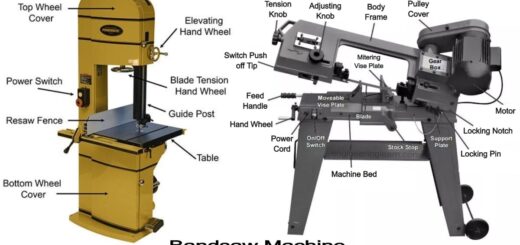Different Types of Chips in Metal Cutting [Advantages & Disadvantages]
![Different Types of Chips in Metal Cutting [Advantages & Disadvantages]](https://engineeringlearn.com/wp-content/uploads/2021/11/Chips-1024x539.jpg)
What are Chips?
Different Types of Chips in Metal Cutting [Advantages & Disadvantages] :- Metal chips are defined as the metal which is removed from different machining processes in various industries or at the excess metal present in the work piece removed as chips. In the machining process, the various types of chips are formed which depends on different factors such as behavior and nature of material which is under the machining process, degree and nature of the interaction of chip interfaces or the amount of energy needed for the extraction of the materials. ( Types of Metals )
3 Different Types of Chips
The various types of metal cutting chips are:
1. Continuous Chips: ( Types of Chips )
When machining of a ductile material is done with minimum friction between material and tool and high speed then continuous chips are formed. Continuous chips are formed mainly due to plastic deformation. The chip thickness is equal to the entire length. Continuous chips provide excellent surface finishing. The major disadvantage of continuous chips is that they are difficult in handling as well as in disposing off.
Various requirements for the production of continuous chips are:
a) Material used should be ductile in nature such as copper, aluminum and mild steel.
b) The speed of cutting in machining should be high.
c) The chips size should be small.
d) Friction between the tool face and chip should be minimum.
e) Tool’s rake angle may be high.
f) Cutting lubricant used should be of efficient type.
g) Tool’s coefficient friction should be low.
Advantages of Continuous Chips
- Better surface finish can be obtained by using ductile material because ductile materials have elasticity.
- Power consumption required in continuous chips is low.
- Continuous chips have very less wear and tear therefore they provide larger lifespan.
- Due to less friction in between tool face and chip, they need lesser generation of heat.
2. Discontinuous or Segmented Chips: ( Types of Chips )
In the process of machining, when the chips produced are small and segmented and have breakage while cutting then the chips is called segmented chips or discontinuous chips. Discontinuous or segmented chips are formed by the use of hard material or brittle material in machining process. Materials like bronze, brass and cast iron are used for discontinuous or segmented chips.
Discontinuous or segmented chips are produced due to small rack angle and slow cutting speed. Discontinuous or segmented chips are generally produced when friction between the work piece and the tool is high. When a ductile material is used in discontinuous or segmented chips then the surface have poor finish. Discontinuous or segmented chips can be handled easily and can be disposed off easily.
Various requirements for the production of continuous chips are:
a) The speed of cutting in machining is low.
b) The friction between tool face and the chip is very high.
c) They have small rake angle.
Advantages of Discontinuous or Segmented Chips
- Discontinuous or segmented chips have less power consumption.
- Discontinuous or segmented chips provide long life span to tools.
- Discontinuous or segmented chips have excellent surface finish for materials which is brittle in nature.
Disadvantages of Discontinuous or Segmented Chips
- The major disadvantage of discontinuous or segmented chips is that they provide poor surface finish to the ductile materials.
- In this type of chips, the wear and tear occurs in the equipment is excess.
3. Continuous Chips with Built-Up Edges: ( Types of Chips )
When ductile material machining process takes place with high temperature, high pressure in cutting and high friction between the tool face and the chips. Continuous chips with built-up edges are quite same to the continuous chips but they are rougher than the continuous chips because of the built up edge. This results in weld or sticking of the material with edge of tool.
Continuous chips with built-up edges are produced when the friction in between the tool and the chip is high and when chip flows upward. The generation of heat at the tool’s nose is very high because of the high friction in between the tool and chip. Therefore, metal which is compressed is fit in the nose of tool is welded hence this is called built up edges.
Continuous chips with built-up edges occur:
a) Due to the use of materials which is ductile in nature at the time of machining.
b) Due to tool’s small rake angle.
c) Due to the slow speed of cutting tool.
d) Due to high feed rate of the tool.
e) Due to high thickness of the chip.
f) Due to the temperature between tool and work piece is high.
g) Due to increase in friction between the tool and chip faces due to lack of coolant.
Advantages of Continuous Chips with built-up edges
- Continuous chips with built-up edges increases life span of tool.
- Tools are being protected from damage because of high friction.
Disadvantages of Continuous Chips with built-up edges
- The major disadvantage of continuous chips with built-up edges is that they produce rough surface finish.
- They results in less cutting forces and rake angle.













